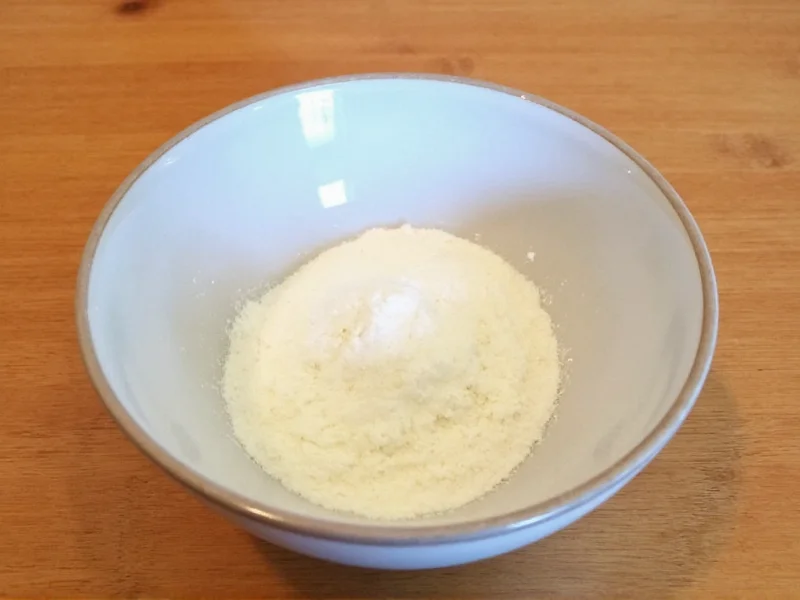Converting fresh onions to onion powder requires understanding the fundamental difference between these two forms. Fresh onions contain about 89% water, while onion powder is dehydrated and concentrated. This transformation means you need significantly less powder to achieve similar flavor intensity in your recipes.
Understanding the Conversion Ratio
The standard conversion ratio between fresh onions and onion powder is 4:1. This means for every 1 cup of fresh chopped onion, you'll need 4 tablespoons (equivalent to 1/4 cup) of onion powder. This ratio works because dehydration removes the water content, concentrating the onion's flavor compounds.
When substituting in recipes, remember that onion powder provides consistent flavor without the moisture that fresh onions contribute. This makes it ideal for spice rubs, dry marinades, and recipes where excess liquid could affect texture.
Detailed Conversion Chart
| Fresh Onion | Onion Powder Equivalent |
|---|---|
| 1 cup chopped | 4 tablespoons (1/4 cup) |
| 1/2 cup chopped | 2 tablespoons |
| 1/4 cup chopped | 1 tablespoon |
| 1/3 cup chopped | 1 tablespoon + 1 teaspoon |
| 1 medium onion | 3-4 tablespoons |
Factors Affecting Onion Powder Conversion
Several variables influence the precise conversion when substituting fresh onions with powder:
Onion Variety
Different onion types have varying water content and flavor intensity. Yellow onions (most common for cooking) follow the standard 4:1 ratio. Sweet onions like Vidalias contain more water, potentially requiring slightly more powder for equivalent flavor.
Cooking Method
The preparation technique matters significantly. For dishes where onions are sautéed until caramelized, you might reduce the powder amount by 25% since cooking concentrates fresh onion flavor. In raw applications like salads or salsas, maintain the standard ratio.
Recipe Type
Dry recipes such as spice rubs, bread doughs, or dry marinades benefit most from onion powder. For soups, stews, and sauces where moisture content isn't critical, you can often use the full conversion ratio. In baking applications, consider reducing the liquid elsewhere in the recipe when substituting powder for fresh onions.
Practical Substitution Tips
When converting recipes from fresh onions to powder, follow these professional kitchen practices:
- Always measure onion powder with proper measuring spoons, not eyeballing
- For best results, add powder early in the cooking process to allow flavors to distribute evenly
- Combine with a small amount of water (1 tablespoon per 4 tablespoons powder) when substituting in raw applications
- Consider adding a pinch of sugar when using powder in place of caramelized onions
- Store onion powder in an airtight container away from light to maintain potency
Common Conversion Mistakes to Avoid
Many home cooks make these errors when converting between fresh onions and powder:
- Using equal volumes (1:1 ratio) which results in overpowering onion flavor
- Not accounting for the lack of moisture when substituting in baking recipes
- Using old, stale onion powder that has lost potency
- Adding powder too late in the cooking process, preventing proper flavor distribution
- Substituting without considering the recipe's texture requirements
Related Onion Conversions
Understanding other onion form conversions helps when adapting recipes:
- 1 cup green onions (scallions) = 2 tablespoons onion powder
- 1 cup frozen onions = 3 tablespoons onion powder
- 1 cup onion flakes = 3 tablespoons onion powder (flakes are partially dehydrated)
- 1 small onion (about 1/2 cup chopped) = 2 tablespoons onion powder
When to Choose Onion Powder Over Fresh Onions
Onion powder shines in specific culinary applications where fresh onions would be problematic:
- Spice rubs for meats where moisture would prevent proper searing
- Dry marinades that require even coating
- Baked goods where fresh onion moisture would alter texture
- Long-cooking dishes where fresh onions would break down completely
- Situations requiring consistent flavor without texture elements
However, fresh onions remain superior for applications where texture matters, such as salads, fresh salsas, and dishes where visual appeal of onion pieces enhances presentation.
Frequently Asked Questions
Can I substitute onion powder for fresh onions in all recipes?
While you can substitute onion powder in most cooked dishes, it's not ideal for raw applications like salads or fresh salsas where texture matters. For baking, adjust liquid content since powder lacks the moisture of fresh onions.
Why does 1 cup fresh onion equal 4 tablespoons powder instead of 1:1?
Fresh onions contain about 89% water, which gets removed during dehydration. This concentration means you need significantly less powder to achieve equivalent flavor intensity, resulting in the 4:1 conversion ratio.
How do I adjust recipes when substituting onion powder for caramelized onions?
When replacing caramelized onions, reduce the onion powder by 25% (use 3 tablespoons instead of 4) since cooking concentrates fresh onion flavor. Add a pinch of sugar to mimic caramelization effects.
Does the type of onion affect the conversion ratio?
Yes, yellow onions follow the standard 4:1 ratio. Sweet onions like Vidalias contain more water, potentially requiring slightly more powder. Red onions fall between yellow and sweet varieties in water content.
How long does onion powder stay fresh for accurate measurements?
Properly stored in an airtight container away from light, onion powder maintains potency for 2-3 years. Older powder loses flavor intensity, requiring slightly more for equivalent taste. Check freshness by aroma before using in critical recipes.











 浙公网安备
33010002000092号
浙公网安备
33010002000092号 浙B2-20120091-4
浙B2-20120091-4